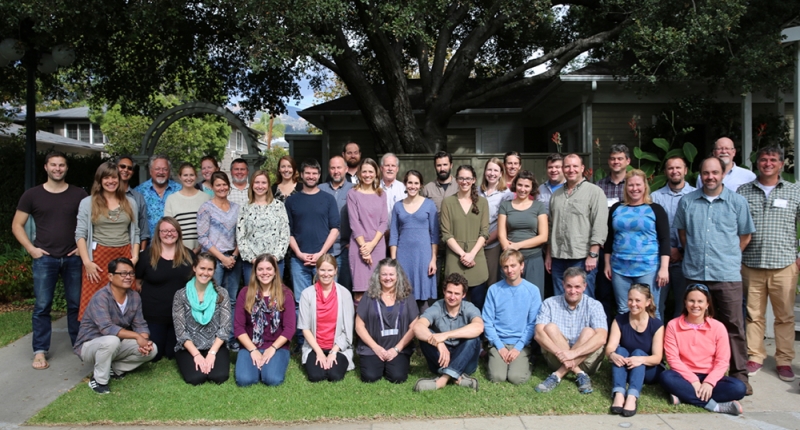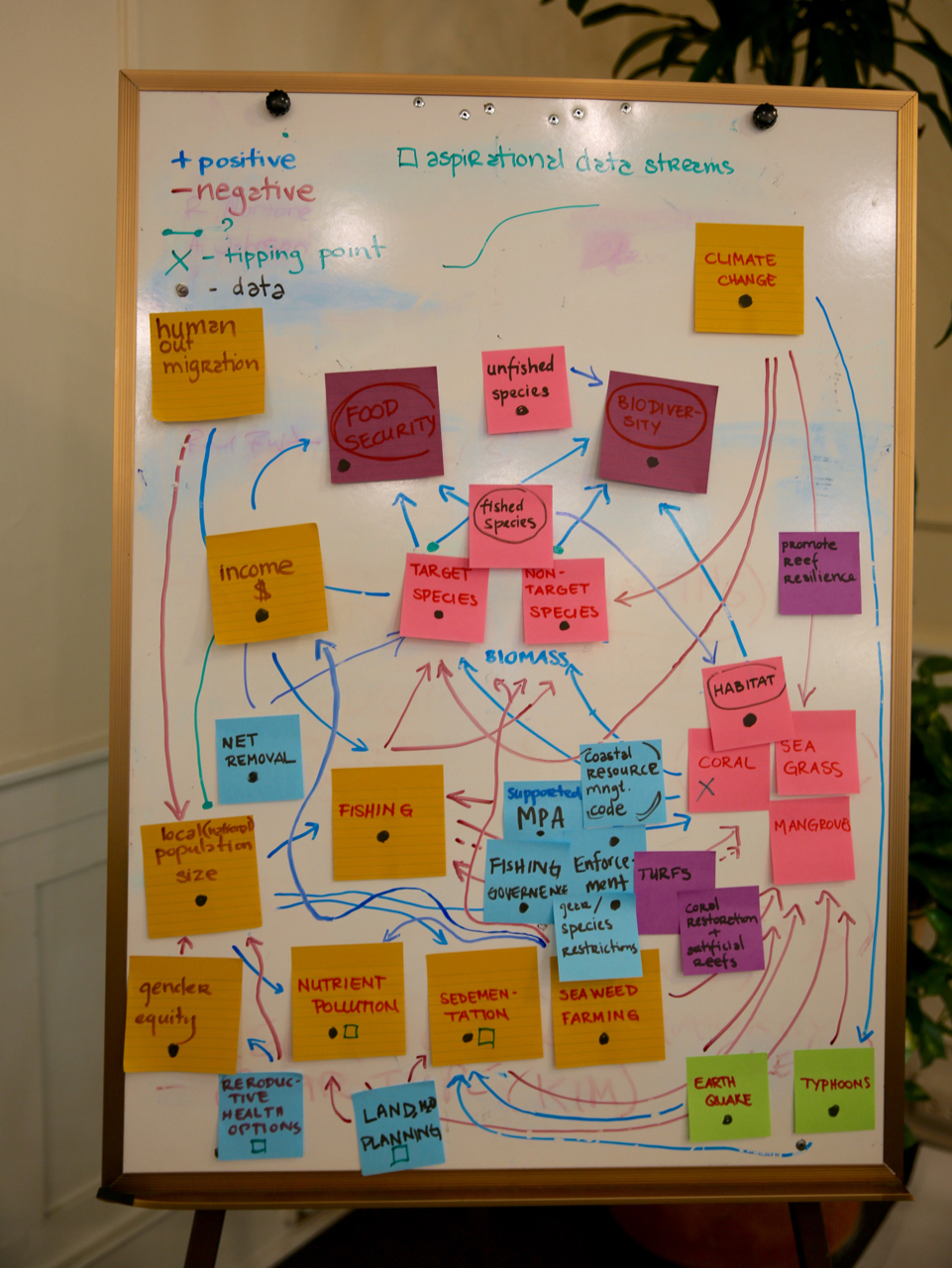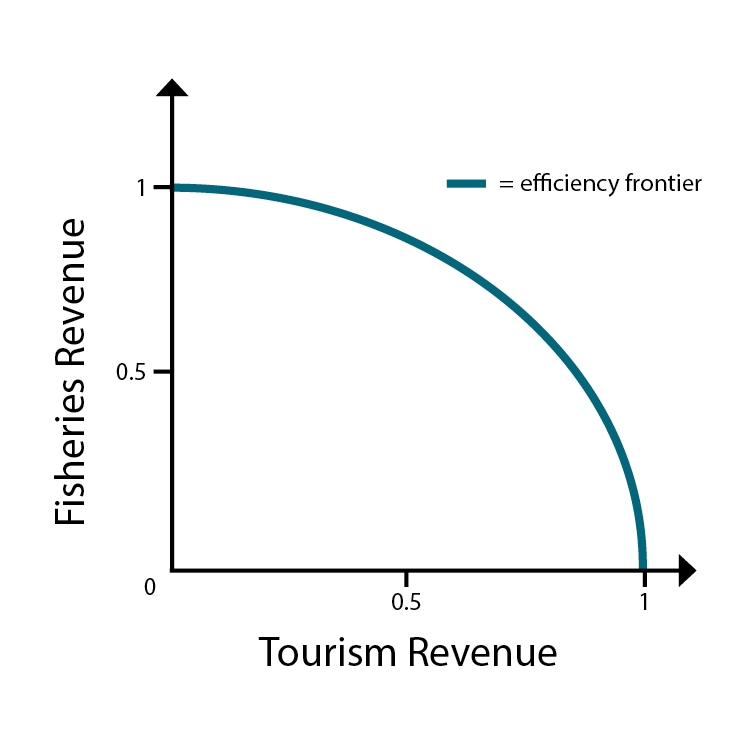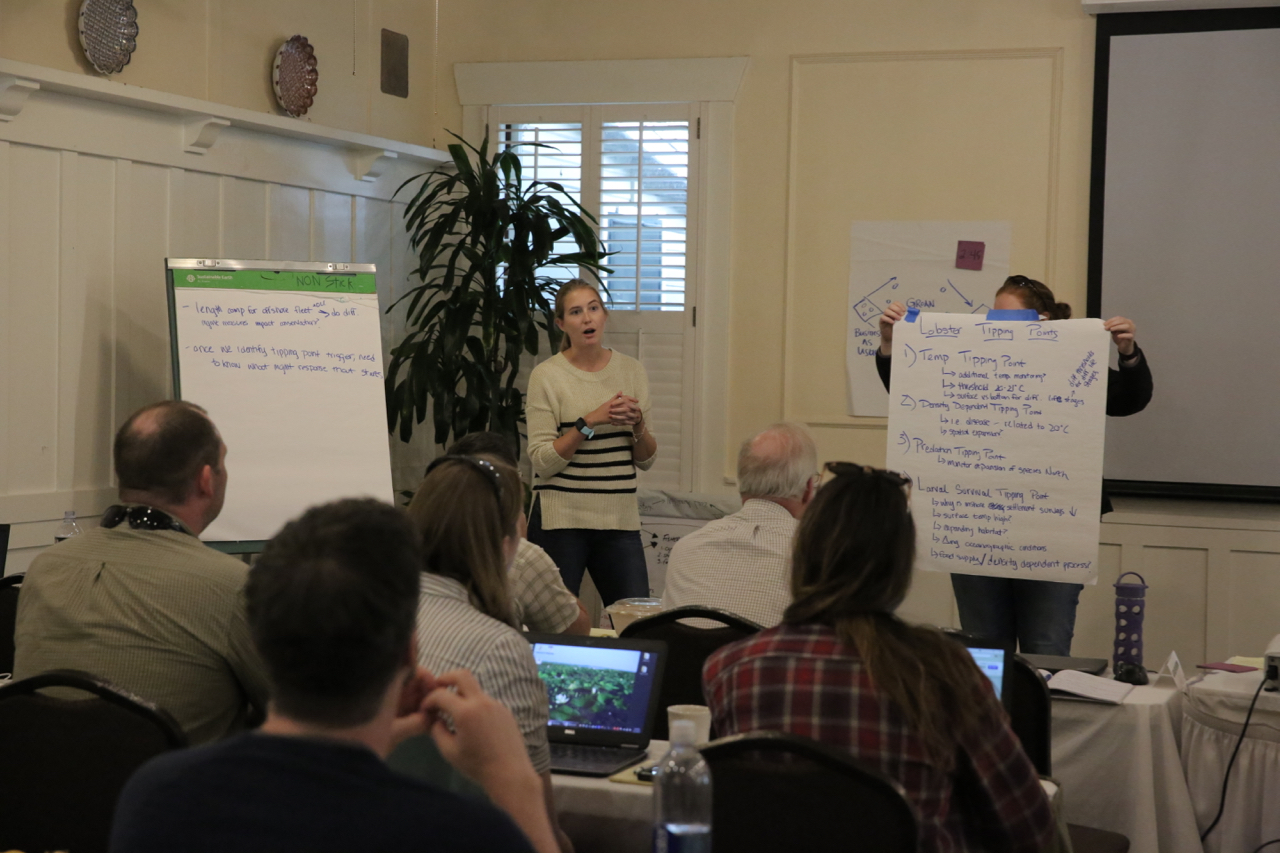Putting tipping points science into practice

In the 1990s, New England’s seas hit a peak in the supply of an economically important and culturally iconic species, the southern New England lobster. Then, something happened that tipped the lobster stock over an edge and caused their populations to plummet, a collapse that still mystifies ocean resource managers and illustrates a challenge that has become common in marine systems.
What the lobster population experienced is referred to as a tipping point, which occurs when small shifts in human pressures or environmental conditions bring about large, sometimes abrupt changes in a whole system. While the detrimental consequences of tipping points, such as the collapse of a fishery, are well known, they can sometimes be difficult to anticipate, identify and, thus, manage.
To help ocean managers better deal with this challenge, the Ocean Tipping Points (OTP) project recently held a three-day workshop on its namesake concept as an effort to bridge science and management. This workshop was a culminating event for the five-year, multi-partner project, which was co-led by NCEAS and focused on understanding tipping points in oceans and infusing that science into ocean management, where the concept's practical tools and management approaches have been largely absent.
“The purpose of this workshop was to catalyze the growth of this community of practice and develop a roadmap for where we go from here,” said Carrie Kappel, lead principal investigator of OTP and a senior fellow at NCEAS.
The workshop hosted six teams composed of experts in marine science, fisheries, social science, and natural resource management, including a group focused on the southern New England lobster collapse. With study systems ranging from the Gulf of Mexico to Canada to the Philippines, they came to the workshop with equally wide-ranging questions, from a general curiosity about how to detect early warning signs of tipping points, to site-specific questions like how climate change is impacting fishing and fishing-dependent communities along the North American west coast.
Among the workshop takeaways was new light shed on approaches the teams could take to tackle their own management challenges, and here we share a couple of the insights they gained that can be applied broadly.
The value of a collective conceptual understanding
Practicing ocean tipping points first starts with a common understanding of the system in question. To get everyone on the same page, each team in the workshop developed a conceptual model, which provides a framework for understanding ecosystems holistically and representing how ecological and social components link to one another, relationships that can then be further examined with statistical techniques.

Armed with paper, post-its, and colored markers, the teams set to work framing their system, identifying potential drivers of change, and defining relationships within the ecosystem. The result, in addition to papers covered with countless arrows, was minds working together in the same direction.
“While our case study focuses on one species, developing a conceptual model helped us recognize and understand that there are multiple tipping points in our ecosystem, including water temperature, predation, fishing pressure, and habitat availability,” said participant Megan Ware, a member of the lobster team and fishery management plan coordinator at the Atlantic States Marine Fisheries Commission. “The conceptual model allowed us to identify these tipping points and understand their influence on various life stages of lobster.”
Analyzing relationships between drivers and ecosystem responses can also help managers refine their monitoring plans, such as increasing monitoring when a system is close to a tipping point. Identifying thresholds can not only reduce management costs and effort, it also provides concrete information about a system’s limits and helps inform the development of management targets.
To the workshop participants, conceptual models helped them discover possible indicators for identifying tipping points and highlighted data needs. According to Rod Fujita, co-principal investigator of OTP and the director of research and development for Environmental Defense Fund’s Oceans Program, conceptual models can also be powerful tools for engaging local communities.
“These models have helped communities better understand their systems and also enabled us to more effectively communicate about the concept of ocean tipping points,” said Fujita.
A new analytical lens for existing challenges
Applying the ocean tipping points framework also means being able to analyze a system through a different lens. Workshop instructors introduced participants to a range of analytical tools that can aid ocean managers and scientists in detecting tipping points and understanding their implications, including cluster analysis and boosted regression trees, generalized additive models, breakpoint analyses, and tradeoff analyses.

Of particular interest among participants were tradeoff analyses, which allow managers to compare the costs and benefits of different management alternatives designed to avoid crossing undesirable tipping points. They help illustrate where costs can be minimized and benefits maximized to help reduce potential conflict among user groups.
“Mapping conservation benefit versus economic reward helps bring fishermen and their livelihood into the conversation,” said Patrice McCarron, another member of the lobster group and the executive director of the Maine Lobstermen’s Association. “Fishermen will be able to connect with this type of analysis and easily see if they are on or below the line [of the efficiency frontier].”
While the ocean tipping points framework presents new analytical tools and a new lens through which to view data, it does not require managers to start from scratch. Rather, it increases their capacity to address changes in the systems they manage.
Moreover, the concept facilitates communication among different stakeholders, because these dramatic and sometimes irreversible changes resonate with people. By taking time to discuss the implications of these ecosystem shifts and their impacts on local communities, managers can draw out novel information about the values and preferences represented in the community.

Equipped with tools to analyze tipping points in their ecosystems and roadmaps for incorporating this information into their own management context, the teams left the workshop with a new toolbox for addressing dramatic ocean changes.
“The workshop provided us with the tools needed to analyze these ecosystem shifts so that we can better predict and prepare for tipping points in the future,” said Ware. “It forced us to take a broader look at the ecosystem and provided a new lens through which to evaluate the management of lobster.”
And this workshop was not the end of the road for the Ocean Tipping Points project. There may be more of such workshops in the future to continue growing the ocean tipping points community and building a practice that improves the management of shifts within marine ecosystems and leads to their resilience.
All photos courtesy of Kristen Weiss.
